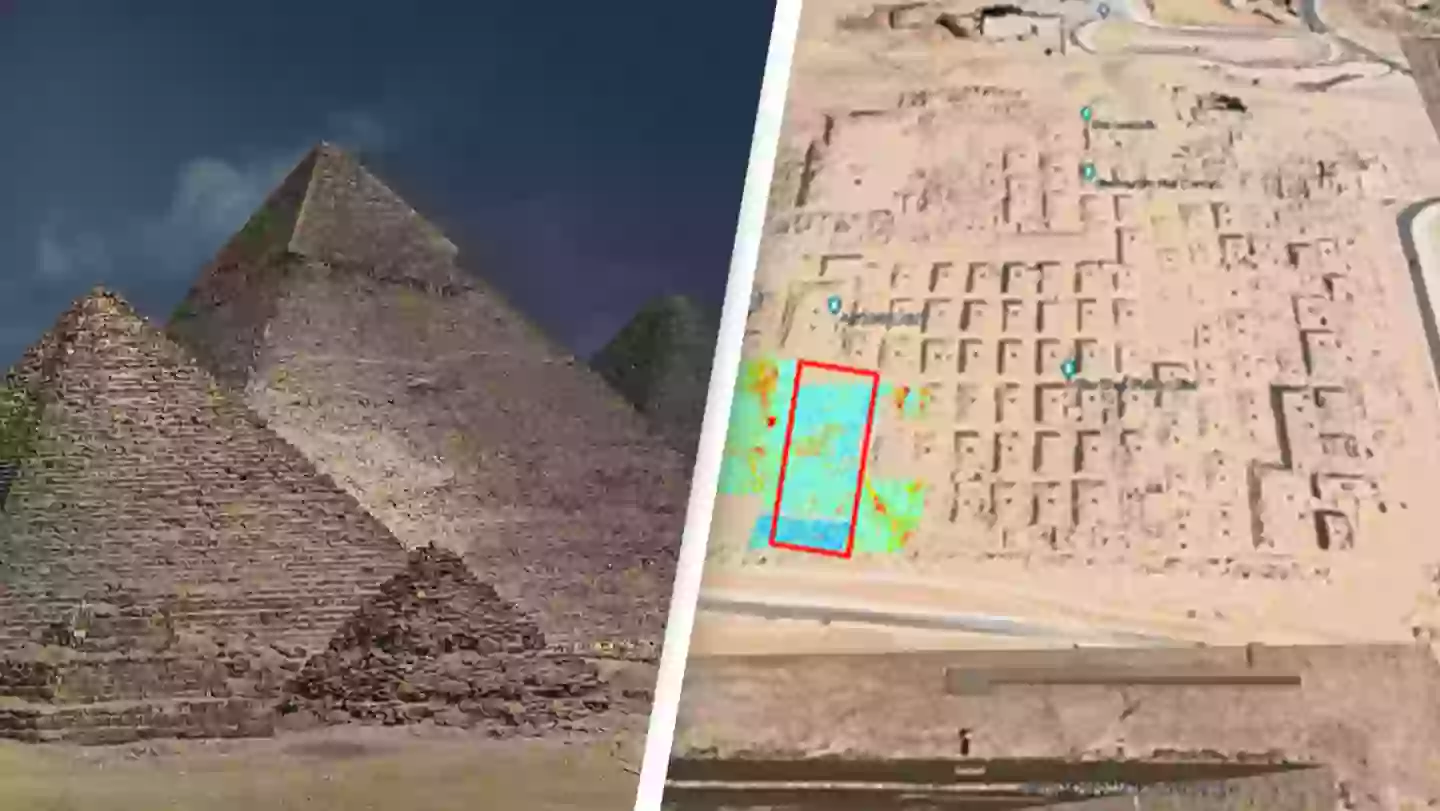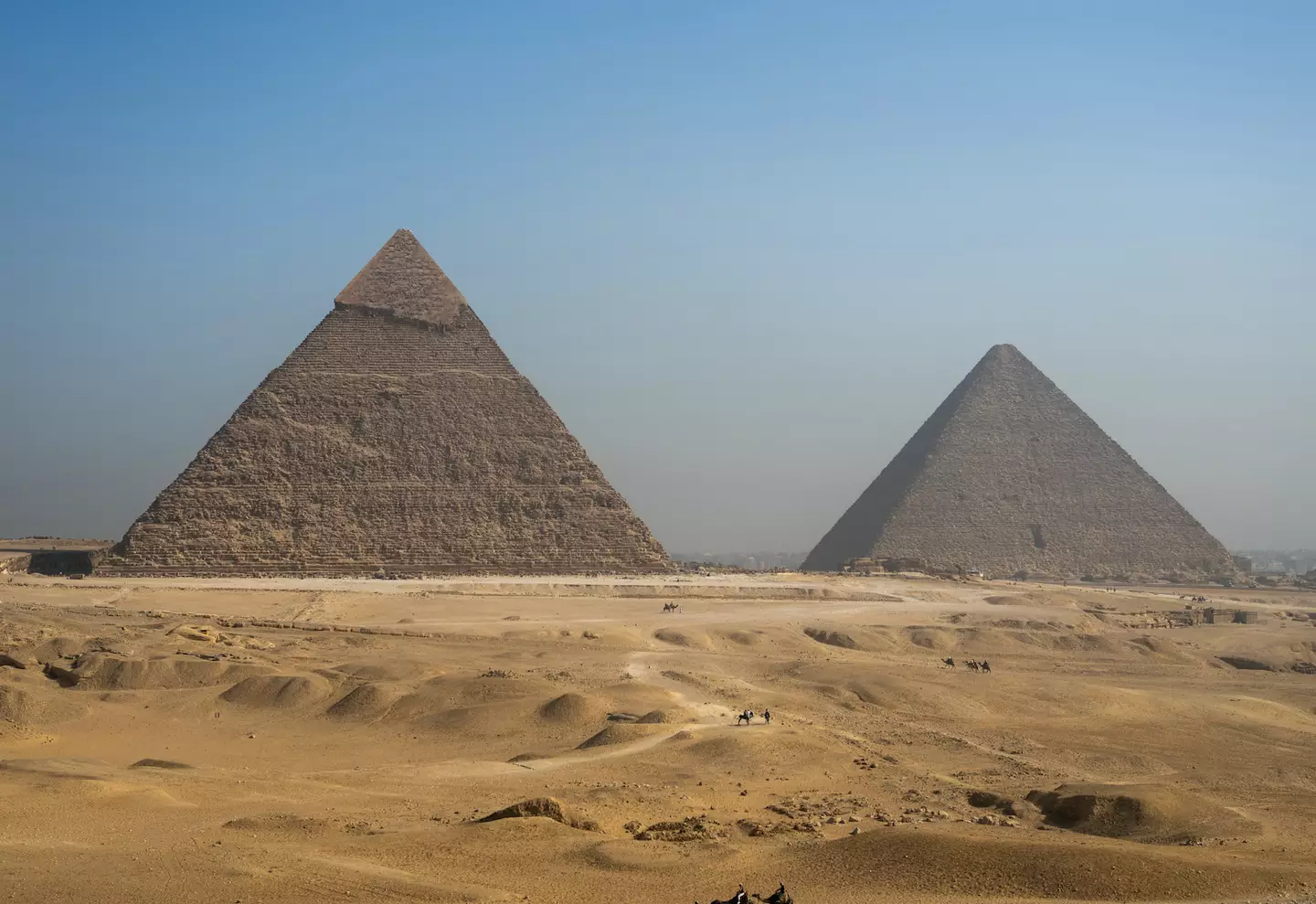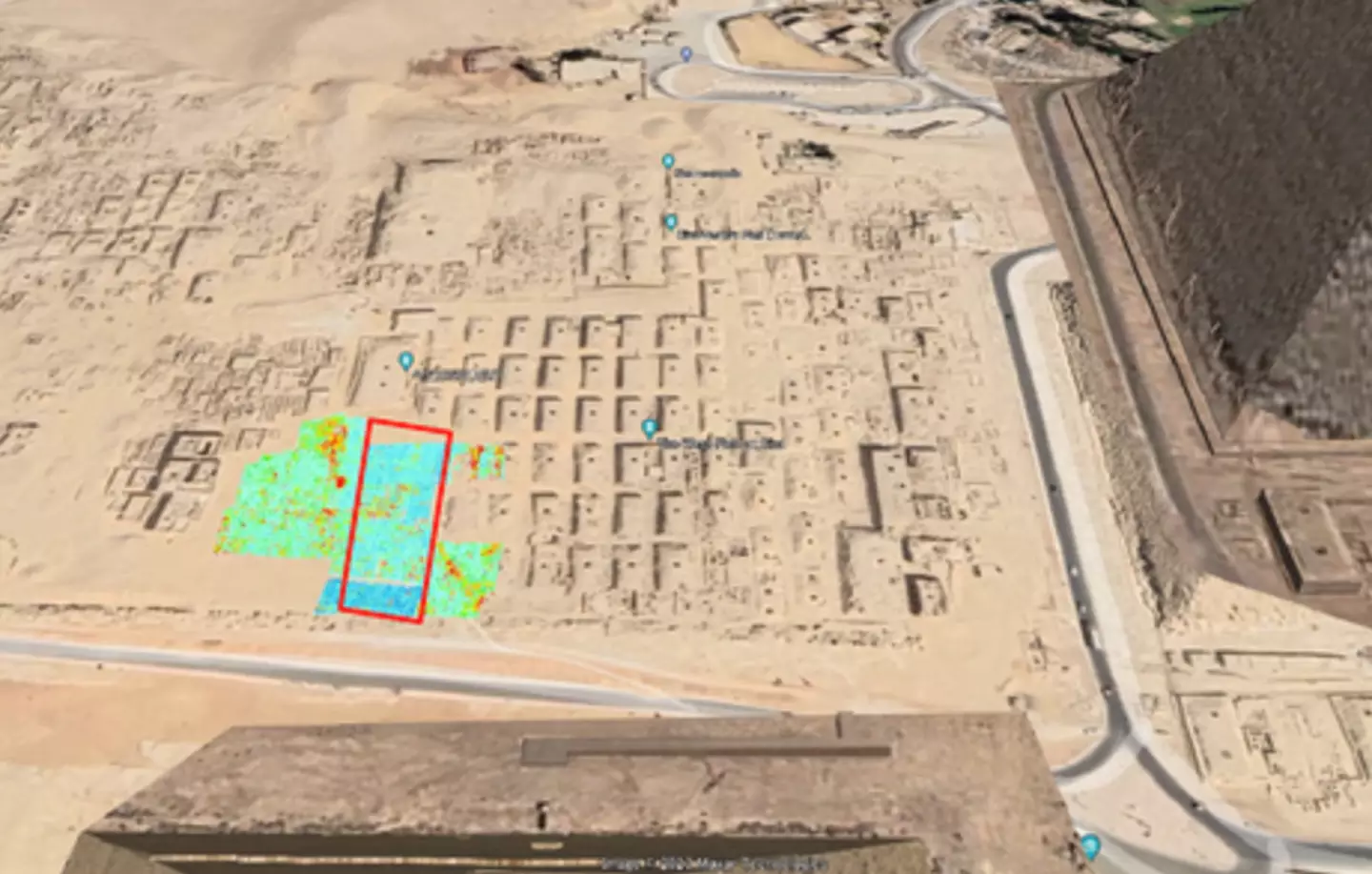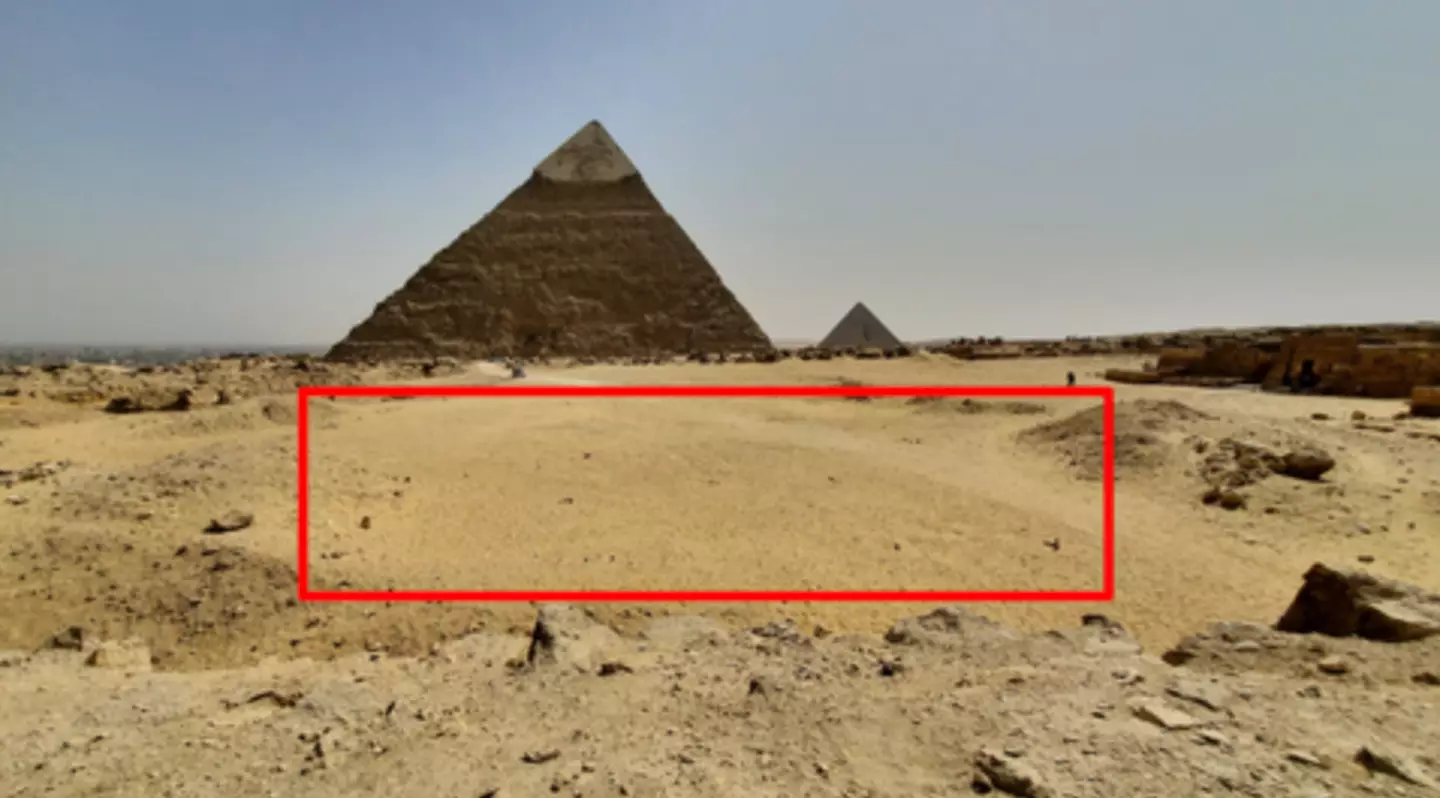
Unknown structure discovered under sand near Great Pyramid of Giza in significant breakthrough for researchers

Archaeologists in Egypt may have made a breakthrough in research thanks to the discovery of an unusual structure hidden under the ground near the Great Pyramid of Giza.
Centuries after the pyramids were first built, the discoveries by those working at the site just keep coming.


Research began on a new area in 2021. (JEWEL SAMAD/AFP via Getty Images)
The recent findings were detailed in a report published on 5 May by researchers from Egypt’s National Research Insтιтute of Astronomy and Geophysics, as well as Japan’s Higashi Nippon International University and Tohoku University.
Located between one-and-a-half and six-and-a-half feet below the surface of the Western Cemetery, adjacent to the Great Pyramid of Khufu – also known as the Great Pyramid of Giza – the structure forms an unusual L-shape and measures roughly 33 by 49 feet.
Unlike the pyramids rising from above the ground, the structure is completely filled with sand, leading researchers to believe it may have been filled after it was constructed.
The mysteries don’t stop there, as beneath the structure, at a depth between about 16 and 33 feet, is what the team described as a ‘highly electrically resistive anomaly’ measuring about 33 by 33 feet.


The structure is located near the Western Cemetery. (Google Maps/Archaeological Prospection)
According to the researchers, ‘electrically resistive material in a sand dune can be a mixture of sand and gravel, including sparse spacing or air voids within it’.
The placement of the structure in the Western Cemetery is helping to form some of the theories about it, as the area is home to the tombs of King Khufu’s family members, who are buried above burial shafts.
However, the area where the new structure has been found seemed to be empty of tombs, instead appearing simply as a patch of sand.
“There are no significant remains above ground in this area, but is there really nothing below the ground?,” the team asked in their report.
“No underground investigations have previously been carried out.”


The structure was filled in after being built. (Archaeological Prospection)
Using ground-penetrating radar (GPR) and electrical resistivity tomography (ERT), the researchers mapped the area and have hypothesized that the upper structure ‘could be vertical walls of limestone or shafts’.
Below, the archeologists believe there could be a tomb – though they’ve stressed that a ‘more detailed survey would be required in order to confirm this possibility’.
The research began in 2021 and has been published in the journal Archaeological Prospection, where the team shared their thoughts on the significance of the finding.
“We believe that the continuity of the shallow structure and the deep large structure is important,” they wrote.
The true significance, however, will not be revealed until further research has been carried out.
Featured Image Credit: Rasit Aydogan/Anadolu via Getty Images / Archaeological Prospection


